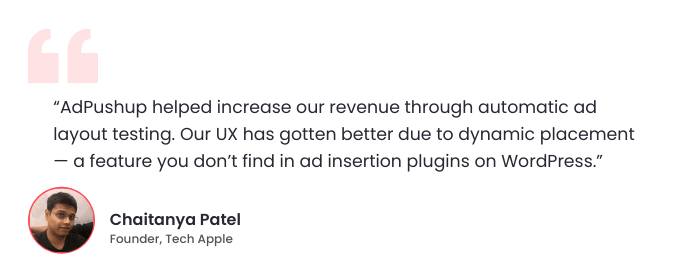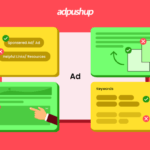Native video ads are one of the crucial elements of a successful advertising strategy.
It’s essential to execute it correctly to enhance engagement and effectively reach your desired audience.
In a landscape where attention spans are diminishing, and ad blockers are prevalent, brands face challenges in conveying their message.
However, native advertising has proven to be effective in overcoming these obstacles. But how? Most importantly, what are these native video ads? Are they any good? Can publishers use them to their advantage?
Let’s find answers to all these questions.
What is Native Video Advertising?
Native video advertising is a type of online advertising where video ads are seamlessly integrated into the content on a platform rather than appearing as disruptive interruptions. Imagine it as branded messages disguised as natural parts of the user experience.
Crucially, native video ads focus more on education and entertainment, being research-based and storytelling-oriented rather than product-centric or sales-focused. This unique combination makes them more engaging and shareable among viewers.
How Native Video Advertising Works?
Using native video content is simpler for engaging your audience compared to methods that require them to click through or open another tab. On various platforms and social media channels, customers expect a consistent experience.
Brands that seamlessly fit into this space and capture users’ attention have an advantage over disruptive video ads.
Specific platforms prioritize native video through algorithm modifications. If you’re not using native video, your ad might be pushed down the queue in favor of native ads.
Native video ads are called “native” because they are formatted for the hosting platform, blending in with other content. These ads, when well-executed, are promotional, engaging, and highly targeted when leveraging relevant data for campaign setup.
Native advertising is gaining influence due to its high engagement and non-disruptive nature. Many experts predict it is the future of advertising.
Native video ads can be placed on various social networks (X, Facebook, Instagram, Pinterest), video platforms (YouTube), and content discovery networks (Taboola, Outbrain). They are typically click-to-play or autoplay (muted) and are at least 30 seconds long.
What are the Key Features of Native Video Ads?
There are plenty of features of native video ads, some of which are:

Seamless Integration
Unlike pre-roll ads that force you to watch before your desired content, native video ads blend seamlessly with their surroundings. They often appear as in-feed content within social media feeds, news articles, or other online platforms.
Platform-Specific Design
Native videos are formatted to look and feel like organic content on the specific platform they’re displayed on. It ensures they don’t stand out jarringly and appear more engaging for users.
Targeted Reach
Like other digital advertising, native video ads can be targeted to specific audiences based on demographics, interests, and online behavior. It ensures they reach people who are likely to be interested in the advertised product or service.
Enhanced Engagement
Compared to traditional video ads, native videos offer a more engaging experience for viewers. They’re designed to capture attention without feeling intrusive, leading to higher click-through rates and brand recall.
What are the Benefits of Using Native Video Ads?
Native video ads offer a bunch of advantages over traditional video advertising methods, making them a popular choice for marketers today. Here are some key benefits you can reap by using them:
Storytelling Power
Video is an inherently engaging format, allowing you to tell your brand story, showcase products, and offer tutorials in a visually captivating way. It fosters more profound connections with your audience.
Non-intrusive Nature
Native ads don’t interrupt the user’s flow or force them to watch something they didn’t choose. It enhances their overall experience on the platform, making them more receptive to your message.
Measurable Results
Most native advertising platforms offer comprehensive analytics, allowing you to track key metrics like impressions, clicks, and conversions. This data helps you refine your campaigns for better results.
Increased Brand Awareness and Recall
Engaging video content and seamless integration make native ads memorable, leading to greater brand recognition and recall among users.
Versatility in Formats
Native video ads come in various formats like in-feed, sponsored content, carousel ads, and more. It allows you to choose the format that best suits your campaign goals and target audience.
Mobile-friendly
With most online engagement happening on mobile devices, native video ads adapt perfectly to smaller screens, reaching users where they spend most of their time.
Can Publishers Use Native Video Ads to Their Advantage?
Absolutely! Publishers can leverage native video ads to their advantage in a multitude of ways. Here’s how:
Higher CPMs
Compared to traditional display ads, native ads typically give rise to higher cost-per-mille (CPM) rates, meaning publishers earn more per thousand impressions.
Improved User Engagement
Native video ads are less intrusive and more engaging than traditional ads, leading to higher viewership and completion rates. It can translate to increased ad revenue through longer viewing times and potential click-throughs.
Non-disruptive Content
Native video ads seamlessly blend into the publisher’s content, offering a more positive user experience compared to banner ads or pre-roll videos.
Content Diversification
Publishers can integrate these ads within their content, offering variety and potentially attracting a wider audience.
Targeted Advertising
Native video platforms allow publishers to target ads to specific demographics and interests, attracting new audiences relevant to their content.
Data-driven Insights
Publishers can gain valuable insights into user behavior and preferences through native video ad analytics, enabling them to tailor their content and advertising strategies accordingly.
Improved Brand Reputation
Next, associating with relevant and engaging video content can enhance a publisher’s brand image and credibility.
Boosted SEO
Some search engines favor websites with engaging video content, potentially improving a publisher’s search ranking.
Flexibility and Creativity
Native ads come in various formats, allowing publishers to experiment with different storytelling techniques and content types.
A Few Renowned Publishers who use Native Video Advertising:
BuzzFeed
Integrates sponsored videos within its listicles and quizzes, thus, Buzzfeed creates a seamless blend of content and advertising.
The New York Times
Offers in-feed video ads related to the articles users are reading, providing relevant and engaging additional content.
Vogue
It utilizes carousel video ads showcasing fashion trends and designer collections, offering an interactive and visually appealing experience.
Some Famous Native Video Ads Example
Here are some of the most famous native video ad examples, each showcasing the power of this format to capture attention and engage audiences:
BuzzFeed Tasty
In this campaign, visually appealing recipe videos took the internet by storm, seamlessly blending sponsored content with BuzzFeed’s signature listicles and quizzes. The focus on simple, delicious recipes, often shot in a first-person POV, made them incredibly watchable and relatable.
GoPro
GoPro knows how to leverage its action cameras to create stunning visuals, and its native video ads are no exception. They often feature breathtaking stunts and activities, showcasing the capabilities of their cameras while inspiring viewers to capture their adventures.
Asana
Asana posted various video ads that appeared in Facebook feeds, using humor and relatable situations to demonstrate the challenges of managing multiple tasks and how Asana’s project management tool can help. The native format and engaging animation made it stand out from traditional text-based ads.
Spotify “Wrapped”
Each year, Spotify’s “Wrapped” campaign generates immense buzz with personalized videos recapping users’ listening habits. These native video ads appear in users’ Spotify feeds and on social media, creating a sense of exclusivity and community around music preferences.
Final Thoughts of Native Videos
Native video advertising has gone from a novel trend to a dominant force in the digital marketing landscape. Its seamless integration with organic content, engaging storytelling, and targeted reach offer a potent combination for businesses and publishers alike.
For brands, native ads unlock doors to increased engagement, better user experience, and measurable results. They capture attention without feeling intrusive, build brand awareness, and drive conversions through targeted campaigns. Publishers benefit from higher revenue potential, enhanced user interactions, and access to data-driven insights that empower them to refine their content strategies.
Looking ahead, the future of native video advertising is bright. With constant innovation in formats, storytelling techniques, and targeting capabilities, it will continue to evolve as a powerful tool for connecting brands with their audiences in meaningful and engaging ways.
Frequently Asked Questions: Native Video Ads
Native video advertising involves seamlessly integrating video content into a platform or website to enhance the user experience. Unlike traditional display ads, native ads blend with the surrounding content, creating a more engaging and less disruptive viewing experience. The goal is to make promotional content feel organic to the platform, boosting user interaction and minimizing ad resistance.
Native video ads are like sponsored videos smoothly blended into a social media feed, such as on Facebook or Instagram. They seamlessly play within the regular feed, presenting content that fits the platform’s style. These ads mimic user-generated content, making them attractive and less disruptive. The goal is to grab user attention without heavily affecting the overall user experience.
Native ads come in different forms designed to seamlessly fit into the platform they’re on. Examples include in-feed ads within a content feed, sponsored content mimicking a publisher’s material, recommendation widgets suggesting related items, and promoted listings commonly seen on e-commerce sites. What ties these together is their knack for blending in, ensuring a smooth user experience while conveying promotional messages.

Nidhi Mahajan is a content author with a remarkable talent for ad tech. With a deep understanding of the ad tech industry and a sharp focus on detail, she excels in crafting insightful articles and compelling narratives. Nidhi is dedicated to making the complexities of ad tech more accessible to all through her clear and informative writing.







